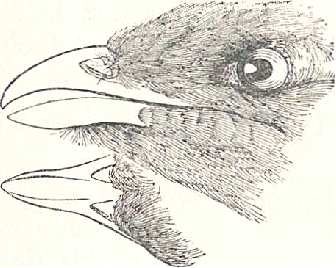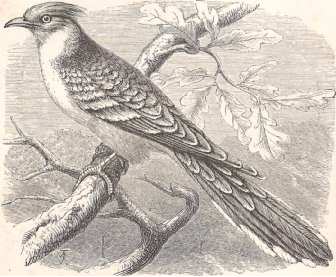|
|
|
The Cuckoo was known
in the UK in earlier days (around the 19th century and before) as the Cuckow.
In Scotland the bird is sometimes known as the Gowk, a word which also
indicates a fool or simpleton. The Common Cuckoo's method of foisting
the incubation and upbringing of its chicks upon foster-parent birds makes
this a fascinating bird to watch and study.
After spending the
winter months in Africa, the Common Cuckoo travels to Europe during late
March or Early April. During the late Spring and summer it can be
found in most European countries, even as far North as within the Arctic
Circle.
Once it has arrived
at a suitable spot, it begins its song which so closely sounds like its
own name. Both during the day and at night, the bird can be heard
singing its distinctive tune, although as the months go by the frequency
that the bird can be heard reduces, and it appears to prefer to shy away
into the background a little. There may be good reason in this, as
many smaller birds seem to chase the cuckoo similar to the way they would
chase a hawk - the cuckoo's method of flying and visual characteristics
being similar in many aspects. By the end of July, most Cuckoos have
departed from the UK although a few may stay until the end of August or
beginning of September.
|

Picture of Coua

Great Spotted Cuckoo
|
Other interesting Species
of Cuckoo
The main distinguishing characteristic
between some types of cuckoo is said to be a difference in their song.
However, there are some species with much more marked differences.
Different members of the cuckoo family
are found in Asia, Africa and Australia. Many are, like the common
cuckoo, brood parasites, but some types do not shy away from their parental
obligations. These include the Coua
of Madagascar and the
Coucal, both
of whom build nests which although are not particularly elegant structures,
at least serve their purpose. Similarly the Roadrunner
(popularised in the old cartoons) is a member of the cuckoo family who
is not a brood parasite.
Two other species
familiar in the USA and parts of the West-Indies are the Yellow
Billed Cuckoo (Coccyzus americanus)
and the Black Billed Cuckoo
(Coccyzus erythropthalmus). Both of these species have been
known to visit Europe sporadically. They build extraordinarily small
nests compared to other birds of the same size, and incubate their dainty
sea-green eggs attentively.
The
Lizard Cuckoos (genus Saurothera)
and the genus Piaya, both found in South America, have been
known as Rain Birds, a name apparently due to the belief that their
song predicts rain.
Black Witch Cuckoo
Another particularly
interesting member of the cuckoo family is known as the Black Witch.
Distributed throughout the Caribbean, this
unusual type of cuckoo taks a completely different path compared to most
other birds in its nesting and incubation habits. Rather than a single
bird nesting with an caring for its own eggs, several Black Witches will
band together and lay all of their eggs in a single nest. If a trespasser
interrupts the peace, maybe 6 or so hen birds will scatter from the nest,
seeking safety in the branches or a nearby hiding place.
Great Spotted Cuckoo
Another Cuckoo inhabits
North
Africa, Southern Europe and the Holy Lands, and is very common there. This
is the Great Spotted Cuckoo (Coccystes glandarius or Clamator
glandarius). The birds belonging to this genus have been separated
from the other Cuckoos because the feathers on the head are formed into
a bold crest, in some species, such as Le Vaillant's Cuckoo, reminding
the observer of the crest of the cockatoo: This fine bird measures nearly
sixteen inches in length, and can be distinguished, not only by the crested
head, but by the reddish grey of the throat and chest, and the white tips
of the wing and tail feathers.
This species lays
its eggs in the nests of comparatively large birds, such as the rooks,
crows, and magpies; and it is a remarkable fact, that just as the egg of
the English Cuckoo is very small, so as to suit the nests of the little
birds in which it is placed, that of the Great Spotted Cuckoo is as large
as the average rook's egg, so as to be in proportion to the nests of the
larger birds. The eggs of the Great Spotted Cuckoo can be so similar in
appearance to those of the birds whose nest they have been placed that
even expert ornithologists have been fooled by them.
|
|
|





